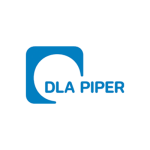The Australian Taxation Office (ATO) has released the final versions of Taxation Ruling (TR) 2025/2 (the Ruling) and Practical Compliance Guideline 2025/2 (the PCG). These pronouncements provide guidance on the application of the third-party debt test (TPDT) and the debt deduction creation rules (DDCR) under the new thin capitalisation regime, which took effect from income years commencing on or after July 1 2023.
Very broadly, the Ruling explains how the commissioner would seek to administer the TPDT and, in particular, the third-party debt conditions required to qualify for the TPDT. The PCG complements the Ruling and outlines the ATO’s compliance approach in relation to restructures undertaken by taxpayers in response to the TPDT and DDCR rules.
The thin capitalisation rules are complex and this latest ATO guidance would be of particular interest to taxpayers with cross-border financing arrangements, or those who are contemplating restructuring their existing financing arrangements in light of these rules.
TR 2025/2
The Ruling sets out the Commissioner’s views on the TPDT, with a particular focus on the third-party debt conditions in Section 820-427A of the Income Tax Assessment Act 1997. The Ruling was previously released in draft form as TR 2024/D3.
The TPDT operates as an alternative to the default “fixed ratio test” under the thin capitalisation rules, which generally disallows net debt deductions that exceed 30% of tax EBITDA. Broadly, the TPDT disallows all debt deductions that are not attributable to third-party debt and that satisfy the third-party debt conditions.
These conditions are intended to ensure the TPDT only captures genuine third-party debt used to fund Australian business operations. They are relevant to working out the amount of debt deductions disallowed (if any) under the TPDT.
The finalised ruling provides further guidance and clarification on various issues, including the following:
The meaning of “Australian assets”, including various factors that taxpayers would need to take into account in determining whether certain assets are Australian assets – to satisfy the TPDT, the lender must generally have recourse for payment only to Australian assets.
“Minor or insignificant assets”, which can generally be disregarded when considering the assets to which the lender has recourse – the ATO’s view is that credit support rights (e.g., guarantees) would generally not be considered minor or insignificant assets.
What constitutes “commercial activities in connection with Australia” – the TPDT generally only captures genuine commercial arrangements relating to Australian business operations. The ATO’s view is that the utilisation of debt to fund distributions such as dividends or trust distributions does not constitute a commercial activity. Therefore, funds borrowed for the purposes of funding such distributions could result in the failure of the TPDT.
Practical Compliance Guideline 2025/2
The PCG was previously released as PCG 2024/D3 and has been updated to include Schedule 3, which outlines the ATO’s targeted compliance approach in relation to the following matters arising under the TPDT:
Restructuring undertaken by taxpayers to remove recourse for payment of a debt to assets that are not Australian assets;
Whether assets are considered “minor or insignificant”;
Whether a debt facility is used to fund “commercial activities in connection with Australia”; and
Restructuring to comply with conduit financing conditions.
Practically, where the restructure falls within the compliance approach outlined in the PCG, the taxpayer should generally be treated as having met the requirements of the TPDT for the period prior to the restructure and the ATO will not apply compliance resources to review/audit such arrangements except to verify the correct application of the compliance approach.
The following requirements must also be met to qualify for the benefits under Schedule 3 of the PCG:
Any restructure is undertaken in a straightforward manner having regard to the circumstances, without any associated contrivance or artificiality, and is on arm’s-length terms;
The restructure will not attract the application of the general anti-avoidance rules (Part IVA);
Prior to and following any restructure, the original arrangement satisfies the third-party debt conditions (other than the condition to which the compliance approach applies, or conditions where more than one compliance approach applies to a restructure);
The use of the financial arrangement does not change; and
The quantum and rate of the financing arrangement do not materially change.
In addition to Schedule 3, the PCG also includes the following:
Updated risk zones, including a “white zone” for previously reviewed low-risk restructures. The ATO will not generally apply any compliance resources for taxpayers in the white zone, beyond verifying that the conditions for the white zone have been met.
New examples in schedules 1, 2, and 4 to help taxpayers assess compliance risk in relation to the TPDT and DDCR.
The PCG applies to restructures entered into on or after June 22 2023, the date that the legislation implementing the TPDT and DDCR was introduced into the Australian Parliament.













